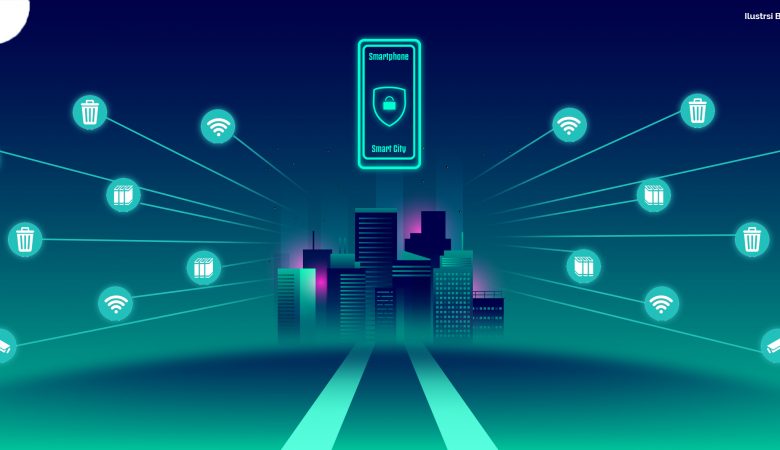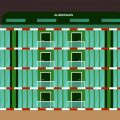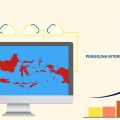Urban Control will allow cities and governments to connect IoT devices around the world via cellular networks for 10 years at a one-time price per device. Technology provider Urban Control has set the goal of revolutionizing the profitability of smart city Internet of Things (IoT) solutions. At the Smart City Expo in Barcelona, the company announced that it will incorporate a 1NCE cellular connection into the street lighting controls of the new Urban Node 324 series. With the built-in 1NCE connectivity, Urban Control can connect IoT devices around the world over a cellular network at a one-time price per device for 10 years.
IoT Carrier
“The 1NCE is a global IoT carrier specializing in connecting low bandwidth IoT applications such as asset tracking, smart street lighting, smart city sensors, smart metering, and waste management. It will enable seamless migration between various communication standards such as LTEM and NBIoT. The goal is to provide cities, municipalities, and businesses deploying IoT solutions with easier deployment, effective coverage, and predictable long-term costs. The standard removes the complexity of adopting smart city devices, and the integration with uCIFI, LwM2M, Talq, and D4i is proof," said Miguel Lira, Director of Innovation and Development at Urban Control. “NBIoT and LTEM are the new mainstream standards for IoT connectivity, and we chose 1NCE because of our innovative 10-year flat rate and a deep understanding of the needs of our IoT customers.”
Urban Control has a special network. Unlike traditional lighting control systems that need to be set up, Urban Node 324 claims to work out of the box like a cell phone. This makes it more cost-effective to take advantage of intelligent central control systems in small, scattered lighting areas such as retail parks, hotel chains, and campus outdoor lighting.
Information technology revolutionizes products. Formerly composed entirely of mechanical and electrical components, products have become complex systems that combine hardware, sensors, data storage, microprocessors, software, and connectivity in different ways. These "smart and connected products" are made possible by significant improvements in processing power and device miniaturization, as well as the network benefits of ubiquitous wireless connectivity.
Information technology revolutionizes products. Formerly composed entirely of mechanical and electrical components, products have become complex systems that combine hardware, sensors, data storage, microprocessors, software, and connectivity in different ways. These "intelligent connectivity products" have opened up a new era of competition, made possible by significant improvements in processing power and device miniaturization, as well as the network benefits of ubiquitous wireless connectivity.
Smart and connected products offer new features, much higher reliability, much higher product utilization, and the opportunity to dramatically grow features that transcend the boundaries of traditional products. Changes like products are also disrupting the value chain, and companies need to rethink and restructure almost everything they do in-house.
The term "Internet of Things" was coined to reflect the growing number of intelligent and connected products and highlight the new possibilities they can present. However, this phrase is not very helpful in understanding the phenomenon or its effects. The Internet, whether human or physical, is just a mechanism for communicating information. The fundamental difference between intelligent network products is not the Internet, but the change in "things”. Intelligent and connected product extensions and the data they generate herald a new era of competition. Companies need to go beyond technology itself and look at the transformation of competition that is taking place. This article, and a related article coming soon on HBR, will dismantle the smart and connected product revolution and examine its strategic and operational implications.
The rise of the Internet with cheap and ubiquitous connectivity triggered a second wave of IT-led transformation in the 1980s and 1990s (see Michael Porter's Strategy and the Internet, HBR, March 2001. ). This allows for coordination and integration between individual activities. Working with external suppliers, channels, and customers. And geographically.
For example, companies have been able to tightly integrate globally dispersed supply chains. Another leap in productivity in the economy is driven by these new and better products. In addition, their production transforms the value chain again by changing product design, marketing, manufacturing, and after-service and requiring new activities such as product data analysis and security. This creates another wave of value chain-based productivity gains. Therefore, the third wave of IT-driven transformation is the largest ever and can lead to even more innovation, productivity, and economic growth than the previous two. Some argue that the Internet of Things "changes everything", but that's a dangerous oversimplification.
Intelligently connected products, like the Internet itself, reflect many new technological opportunities that have emerged. However, the rules of the competition and competitive advantage remain the same. To find their way in the world of intelligent and connected products, companies need to understand these rules better than ever. The connection has two purposes.
First, it enables the exchange of information between a product and its operating environment, manufacturer, user, and other products and systems. Second, connectivity allows some features of a product to reside outside of a physical device, a location called the product cloud. For example, in Bose's new WiFi system, a smartphone application running in the product cloud streams music from the Internet to the system. All three types of connections are required for high-level functionality. If companies take advantage of this opportunity, the era of intelligent and connected products can change this path. Companies and governments work together to get all groups of workers involved, set standards, enable innovation, protect data, and overcome progress-blocking efforts.
These features cover the concept of smart home, smart lifestyle and smart township, including security modules such as window/door sensors, outdoor & indoor cameras, and smart door locks. So there's the information about the concept of smart living through smart applications and IoT which can be considered as a current trend.
Author: Diva Maharani | Illustrator: Akbar Nugroho





